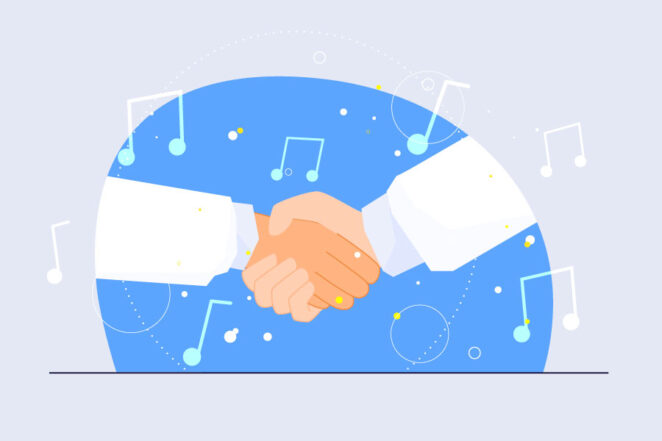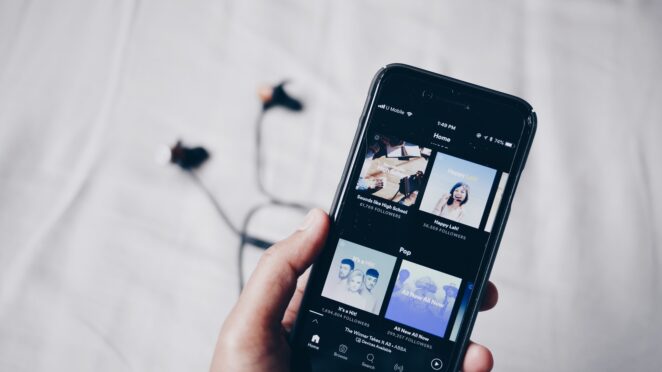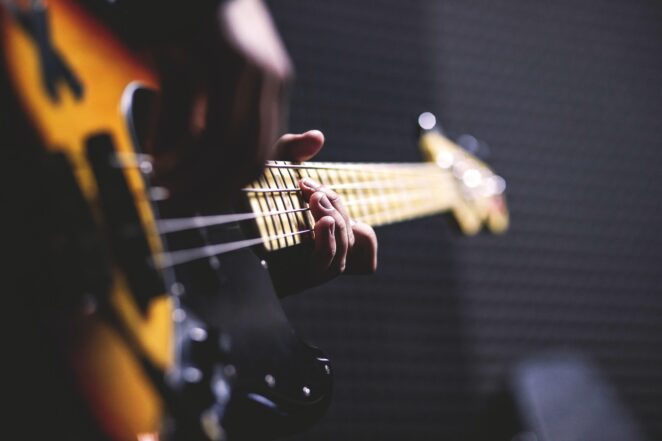Digital rights refer to the authority over digital or online distribution. It allows publishing a digital copy of content online through mobile devices, CDs, or DVDs. Artists can protect their musical projects’ digital copy by controlling its use. The Digital Rights Management, DRM, controls legal access to your digital content.
It restricts copying copyrighted content or its use in a different location. The protection measures can also make your digital content unavailable after a specified period. The 1988 “UK Copyright Designs and Patent Acts” covers artwork’s copyright. It includes contributions by artists to artworks or performances in all art genres.
According to ArtistPush, these basic rights remain inherent when you digitally record performances or artworks. An organization must obtain authorization to publish or distribute digitally recorded artworks. Sometimes, the authorization to publish artistic digital content is regarded as “distribution rights.”
The best step to take

Secondary use authorization permits the distribution of recorded digital artworks in various formats or platforms. This authorization differs from live performance rights, which you may have secured. It will help if you plan the distribution of the artwork after a live presentation ahead of time. You may consider a live stream through an organization’s Facebook or YouTube page.
You may also publish, broadcast, and release it on VOD, DTO, DVD, or cinema. Deciding the platform on which you will publish your music project is necessary. Then, determine if the platform’s distribution partners or art organization will earn from the publication. An organization should place the appropriate “clearances” or rights in published digital content to allow its distribution on different platforms.
The rights holder earns royalties from the platforms on which the digital content has been uploaded. Online publication or distribution of the artwork without the clearances may result in another person’s rights infringement. The offended party may file a claim against the organization, seeking a financial settlement. Right agencies use national recording agreements like UK Writer’s Guild, Musicians’ Union, and PRS. They protect broadcast and cinema recordings.
Rights to digital content and artistic contributions
Here are contributions that have authority over digitally recorded work. Artists who were involved in a recorded work’s creation, even when they didn’t appear in its visuals such as musicians, dancers, visual artists, actors, writers, composers, choreographers, designers, directors, and stage managers.
A third party has rights if you include the person’s copyright in recorded content. A reference may be made to the artist’s written work. Besides, the third party may reference or include other artworks.
A piece of copyrighted music, published as live music or a recording, also has rights. You should seek consent to use published musical content for a live performance and a separate authorization for the project’s recording and online distribution. An authorization to use the music for live performance doesn’t include recording and distribution. Another party may have also received the same authorization from the rights owner to produce recorded work.
Musicians should consider digital rights before publishing their music projects online. Artists must control the use and distribution of their digitally recorded content. Besides, knowledge of common digital rights definitions and terminology is essential.
Why Artists Need Music Rights Managers

The concept of music rights and royalties is complicated. It is also hard to pick a digital distributor and make headlines on streaming platforms. These are some of the difficulties that independent artists encounter, and many are unsure of how to proceed.
How Vital is Rights Management in today’s industry?
The internet is instrumental in spreading music today. The importance of the internet can’t be overstated. It has caused growing concerns over music rights enforcement. The generalization of copyright currently faced in the industry has led to poor policing of unauthorized content on the internet.
This is why rights management is paramount. An artist can measure the extent of the reach of their music in different parts of the world. Knowing revenue sources is also necessary. It is advisable to have a person in charge of these necessities while the artist creates music.
What role does a Music Rights Manager play?

Nowadays, independent musicians may easily reach a large audience of listeners worldwide owing to music streaming services. These platforms have not only helped musicians gain access to international listeners, but they have also helped the artists financially.
Average independent labels generate about 31% of their revenues from foreign countries. This inference was deduced from a 2017 Wintel Independent report. This figure further confirms that geography matters less when technology is involved.
Revenues from streaming services increased by 18.5% in 2020. This segment accounts for 62.1% of the total market share. The influx of technology in the market has made it difficult for traditional models to strive.
Music Rights managers are tasked with the responsibility of securing opportunities, partnering with foreign entities, signing contracts with companies that offer music to businesses, and ensuring partners are in sync to maximize royalties.
Networking technologies and Artificial Intelligence (AI) are the major industry drivers today. Music Rights managers are actively seeking ways to optimize the use of these tools. Blockchain Technology is one of the top interaction models employed by Music Rights managers.
What blockchain technology does is keep records of digital transactions. Footprint and watermark technology is another innovative tool that employs information like moods, tempo, and keys to search for music.
What are CMOs and PROs? How can the Music Rights Manager help in this regard?

Collective Management Organization (CMO) primarily collects performing and mechanical royalties. Sometimes, reproduction and micro-sync royalties are also collected. The CMO’s functions include issuing licenses for the use of the rights managed, upholding the terms of those licenses, and disbursing royalties related to their use.
Performing Rights Organization (PRO) collects performing rights royalties. The country of operation heavily influences how broadly the CMO and PRO frameworks are applied.
These processes involve lots of time, intellect, and resources. Music rights managers do these and more on behalf of their artists. They analyze several revenue streams to see which will provide them with the most revenue now and in the future.
Music rights managers look out for new opportunities for their artists. They discover new revenue streams and help artists land deals with advertising companies, commercial brands, and many others. One popular way of revenue generation is via the NFT.
The music business is tasking and competitive. The role and importance of music rights managers in the industry are indisputable. Hence, the need for artists to employ them.




